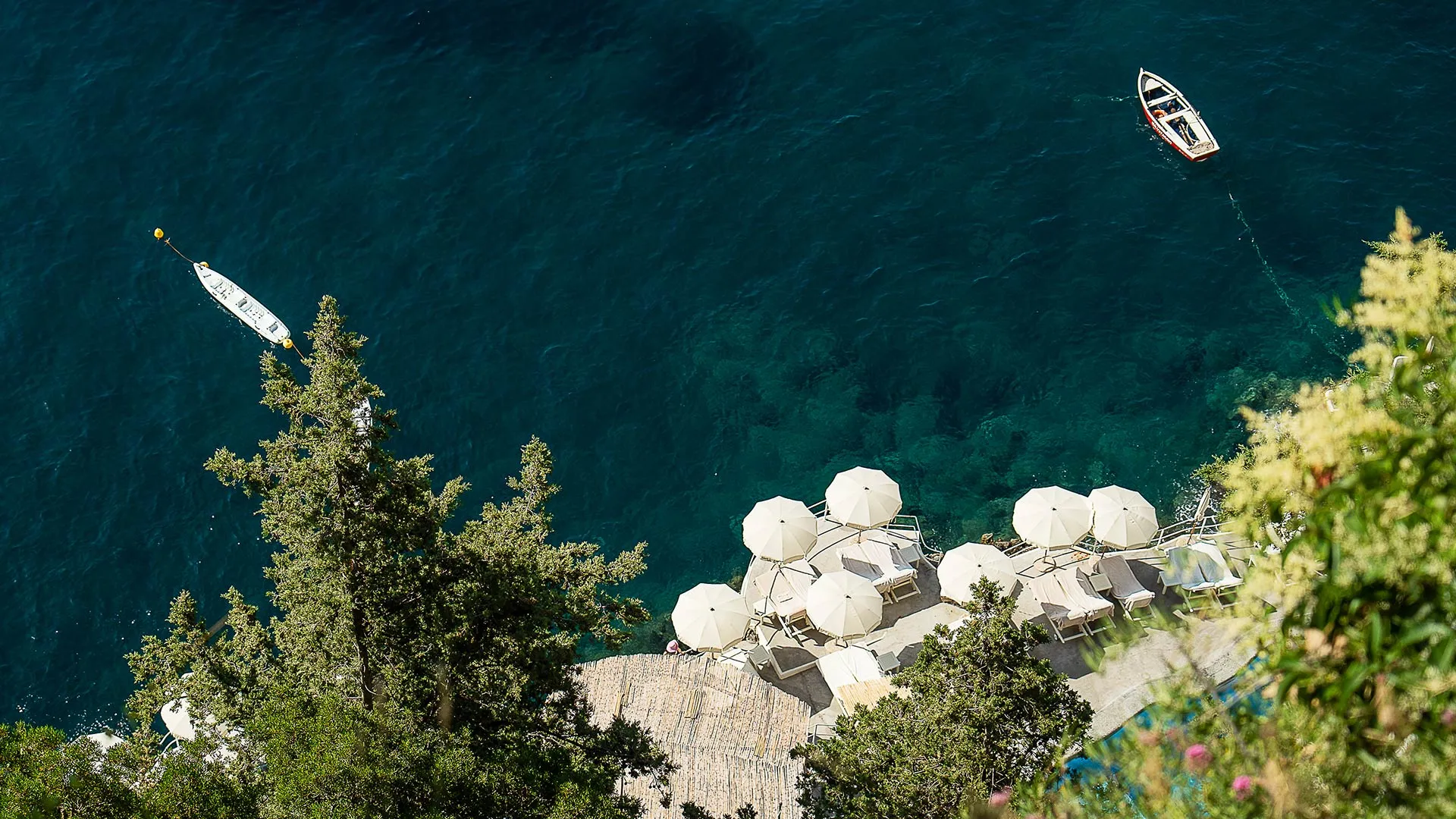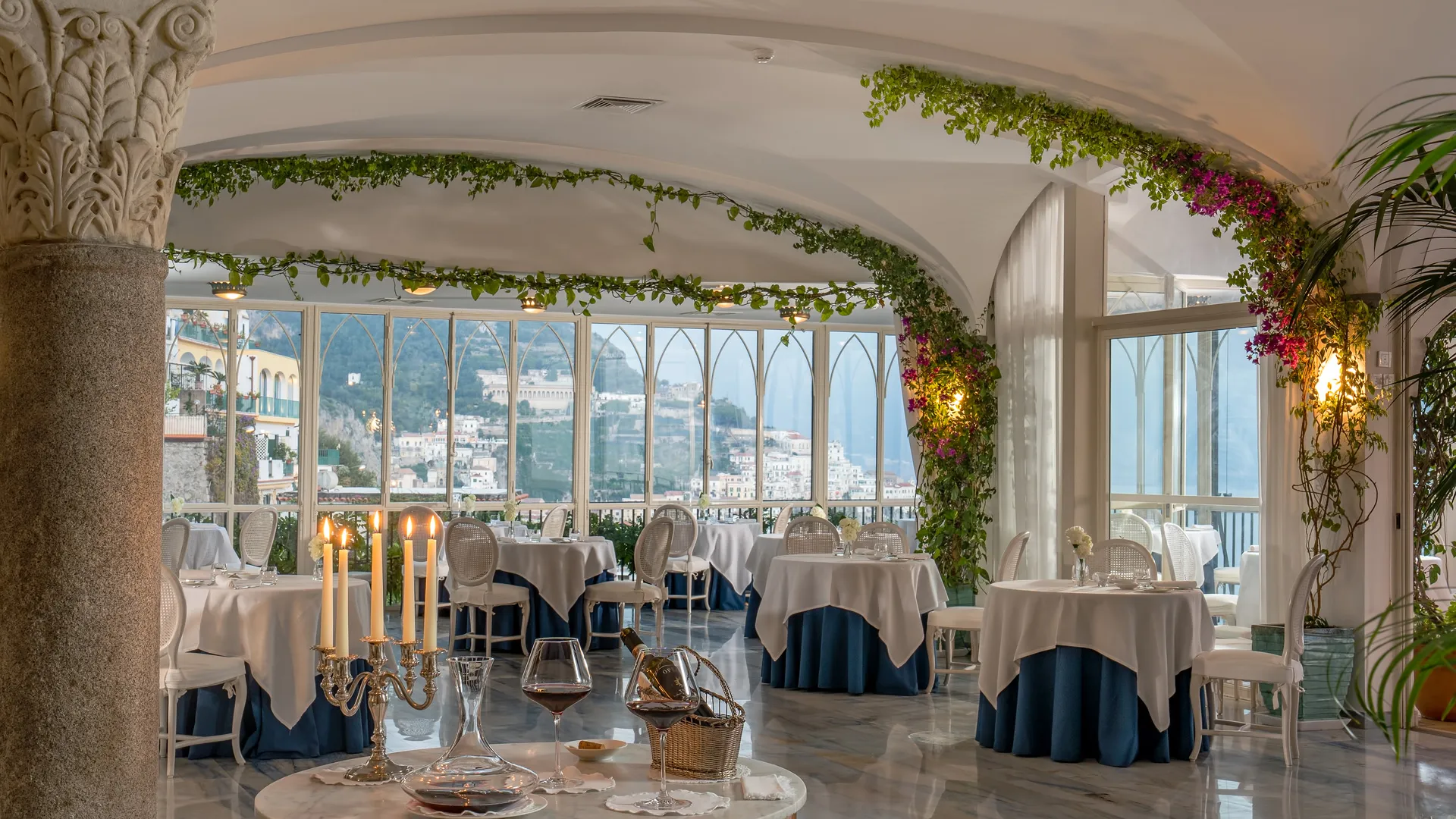5 Reasons to stay in Amalfi when visiting the Amalfi Coast.
- Fallon Fitzgerald

- Jul 22, 2024
- 6 min read
You’ve heard of it, the Amalfi coast. Italy’s glorious Riviera. Typically, when I tell people to stay at Amalfi, they think I am talking about the entire Amalfi coast… unbeknownst to most, the Amalfi coast is made up of several townships: Sorrento, Positano, Praiano, Furore, Ravello, Minori, Cetara, Salerno AND the town of Amalfi.
I personally believe staying at the town of Amalfi, offers you the best experience while you are visiting the Amalfi coast, and here is why.
1. Amalfi has the best luxury hotel selection on the entire coast.
The town of Amalfi houses some of the most spectacular hotel properties in all of the Amalfi coast. Want to throw open the shutters on your terrace in the morning to discover an endless sea of azure, blue? Want your very own private beach club or infinity pool? Well look no further than the following properties:
Santa Caterina offers breathtaking views of the Amalfi coast. It is a glorious art nouveau villa built on a rock overlooking the ocean. It has a terrace style design, and although the rooms may feel a little dated, it is typical of southern Italian charm. Santa Caterina is home to Michelin star restaurant Glicine. There is also a swimming pool built into the rock overhanging the sea, and a private beach on the property to enjoy.
This hotel is special to me, I stayed here on a trip to celebrate my 41st birthday Right after getting engaged to my now husband.
The Anantara is a breathtaking cliff-top hotel, that was converted from a 13th century monastery. The rooms are ultra-modern, but the interior of the old monastery remains. The hotel boasts an Infinity pool, a gym, and a wellness center.
The toiletries provided at the Anantara were all “Aque di Parma”, A favorite of mine!
The Borgo Saint Andrea is unique as it is a more contemporary style hotel compared to others in the vicinity, it fuses mid-century design with Mediterranean style. The hotel is built into the cliffside and houses its own private beach.
The hotel has eight elevators, extending from the terrace at the top of the hotel, all the way down to the private beach of at the base of the cliff.
Hotel Miramalfi is, you guessed it, set on a cliff on the Amalfi coast. What’s incredible about this hotel, is that it is only a few steps from the Amalfi town center. The decor of the hotel is a Blend of Mediterranean contemporary design styles. There are only 40 guest rooms at this hotel, so you know you won’t have to be racing to get a spot at the retro style swimming pool at water's edge.
2. Amalfi is well placed to visit other towns on the Amalfi coast.
Amalfi town is situated roughly in the center of the Amalfi coast. That makes it the prime location to stay and easily take day trips to go and visit other towns close by.
Amalfi to Sorrento: 31.8 km or 1 hour drive
Amalfi to Salerno: 27.5 km or 58 minute drive
Amalfi to Positano: 17.1 km drive or 37 minute drive
Amalfi to Ravello: 6.3 km or 17 minute drive.
Most people talk about Positano, I think that Positano is 100% worth visiting. We thought it was completely magnificent but we’re pleased we only visited for the day. Positano town is one-way, and it’s a little bit difficult to get around.
Go and visit to take pictures, but in my opinion, you will enjoy your experience so much more if you stay in Amalfi and take a day trip to Positano.
The same can be said for Ravello. So many people raved and raved about how magnificent Revello was. Again, we thought it was pretty, worth visiting for the Day, but there was literally nothing to do there. Ravello is up high, and you are offered breathtakingly magnificent views from such a high vantage point. There are some beautiful villas and gardens, but the town itself has very few restaurants, and nothing much else to do to require more than a one day visit.
3. Experience the best dining south Italy has to offer.
Sensi Bistrot - Amalfi
Awarded a Michelin star in 2024, Sensi is located a few meters from the famous cathedral of Amalfi. The cuisine is refined, and innovative, and has solid foundations in Campania and Italian traditional cooking.
Da Ciccio - Cielo Mare Tera - Amalfi
The restaurant where Da Ciccio is located, is one of the oldest structures on the Amalfi coast. The restaurant was opened in 1911. Today it is run by the fourth generation- four sons; Giuseppe is the sommelier; Antonio is the Maître d’. Marco is the executive chef and Stefano is the manager of the hotel.
The vegetables used in the kitchen are all grown in the organic vegetable garden by Father Ciccio himself. The menu is divided into sections, from the field to the table the summer menu chef’s tasting menu, - all keep people coming back year after year.
Da Gemma- Amalfi
Gemma was the name of a young girl who cooked in an apartment a few steps from the cathedral of Amalfi in 1872.
The apartment evolved to become a small restaurant, the restaurant expanded to integrate the rest of the house. Over the years, the restaurant has become very popular, and is now well known by locals and tourist alike.
You simply cannot come to Da Gemma without sampling the Gran Crudo, the flagship dish of the trattoria, it is a selection of shellfish, marinated raw fish, carpaccio, and Tartare.
Glicine- Amalfi
Situated at the beautiful Santa Catarina Hotel, with the landscape of the Amalfi coast as a backdrop, this fine dining restaurant is perched above the sea and boasts stunning views.
This one Michelin star gourmet restaurant, led by chef Giuseppe Stanzione is a delight to the senses.
Alici- Amalfi
Alici is located within the Borgo Saint Andrea hotel, here dinner is served in the spectacular setting of the panoramic terrace. Suspended between the sky and the sea, enjoy the view of the Amalfi coast while dining on innovative creations in this 1 Michelin starred restaurant, by executive chef Crescenzo Scotti.
Rossellinis - Ravello
The famous fine dining restaurant at the beautiful palazzo Avino Hotel features a classic dining room and boasts one of the most beautiful views of the Amalfi coast. Worth making the drive up the hill for dinner.
4. Amalfi is one of the most historic towns along the Amalfi coast.
Amalfi town was very successful for a long time during the Middle Ages. If you wander the streets, you can still see many historical buildings that prove the former cities wealth.
Amalfi was known in the 4th century, it became a powerful Maritime town between the 9th and 12th centuries rivaling Pisa, Genoa, and Venice as a naval power in trade with the east.
In the 1930’s Amalfi became a popular holiday destination for the British upper class.
The Duomo di Sant’Andrea is the most recognizable landmark in the town. It was built in the 10th century and redesigned in the 19th century in the Arab Norman style.
Leading from the basilica are steps into the crypt of Saint Andrew, where his relics can still be found today.
What is now the Anantara hotel, was in 1022 a large cave that would later house the monastery of San Pietro. In 1214 the site was given to the cistercian monks, it soon became an abbey under emperor Federico of Palermo.
From 1826-1835 foundations were laid for the future Hotel, known as Palazzo di Pipinella.
In 1836 King Ferdinando II decreed that the site would belong to the monks again, and it wasn’t until 1882 that the site was developed again into a hotel- Hotel Cappuccini.
5. Take a day trip by boat to Capri, Ischia or any other town close by!
Amalfi is centrally located and is the perfect pied-à-terre to visit other islands or towns by boat. If the weather conditions allow a leisurely private boat trip to neighboring towns for lunch or even a swim is the perfect way to spend a lazy afternoon.
Alternatively, you can take a ferry from the port of Amalfi to the islands of Capri, Ischia, and even townships of Positano, Salerno or Sorrento. Ferries run throughout the day and tickets can be purchased online in advance.
These are just 5 reasons to stay in Amalfi when visiting the Amalfi coast, there are many, many more and I simply cannot wait until next summer to come back again for a visit.

See you next week for another Blog,
Fallon xo
%20(1)_edited.png)

































Comments